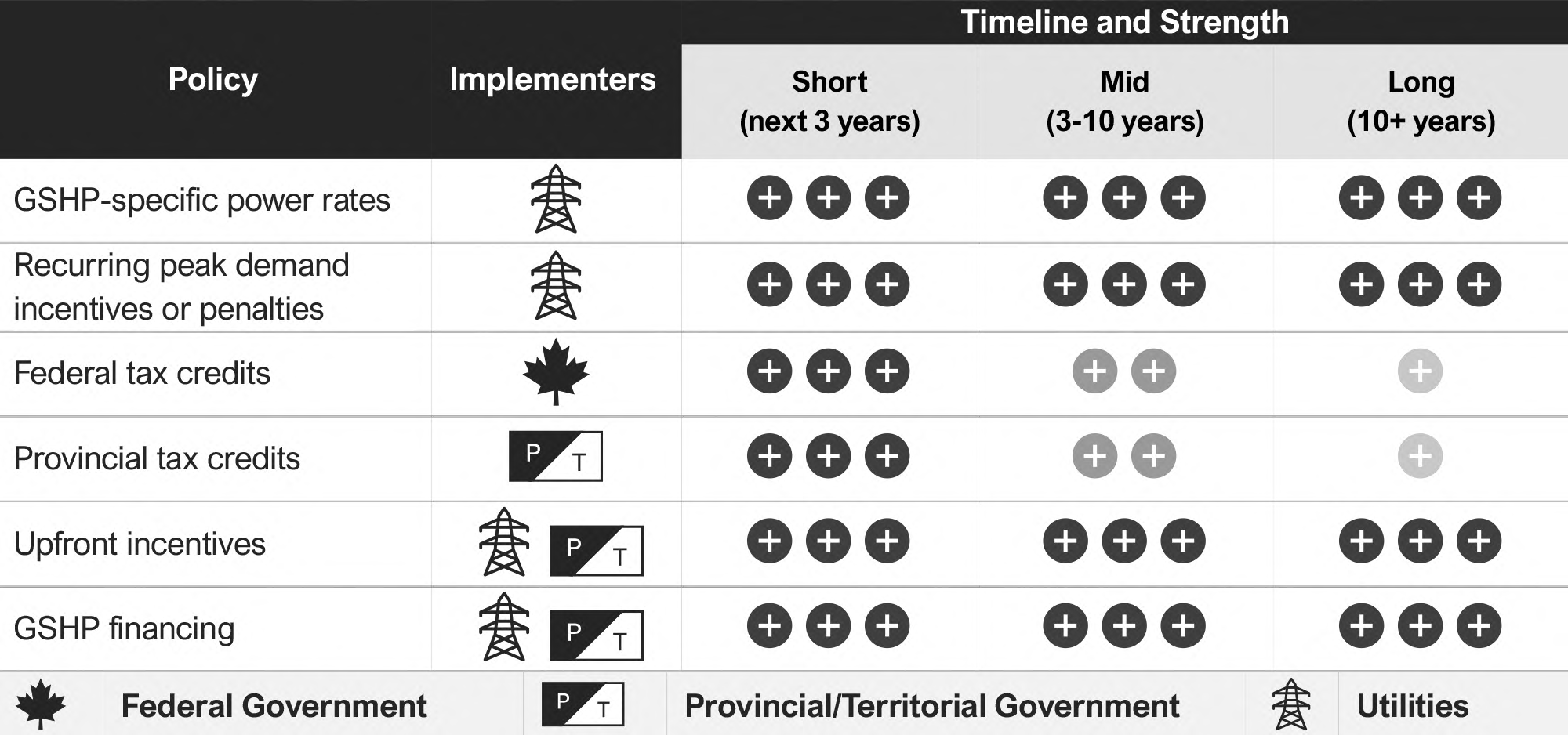Policies to Drive Ground Source Heat Pump Adoption
(download full report here)
Executive Summary
Ground-source heat pumps (GSHPs) are typically the most efficient form of heating and cooling for
buildings. For every unit of electricity a GSHP system consumes, it produces roughly 3-4 units of
equivalent heat (or cooling), thanks to the solar energy naturally stored underground.
Because of these efficiencies, GSHPs can provide significant cost savings in the effort to decarbonize
Canada’s building sector. In cold climates in particular, GSHPs can greatly minimize winter peak demand –
one of the greatest challenges associated with electrification in Canada. In the first phase of this study, we
found such savings could reduce the need for large-scale expansion of Canada’s electricity grid, which
would more than offset their higher upfront costs. In fact, we found that a reasonably ambitious
adoption rate of GSHPs could save Canadians between $49 and $148 billion relative to
electrification through air-source heat pumps (ASHPs) alone, which comes down to about $40,000 in
savings per installed GSHP system.
Although GSHPs can provide a net benefit, there is an important misalignment between the
parties paying for these technologies (individual home and building owners) and those
receiving the benefits (utilities and society). This report outlines effective policy solutions to capture
the potential cost savings with GSHP adoption. In addition to these policies, utilities should update their
cost-effectiveness analysis framework, including their avoided costs and value streams – which should
reflect their decarbonization targets, so the benefits GSHPs bring to the grid can be accounted for more
accurately.
Our study finds that an optimal mix of policies aimed at increasing GSHP adoption could create a
triple-win situation for Canadians: lower costs, increased GHG reductions from space heating, and a
better alignment of costs and benefits. The following policies are key to unlocking the cost and
environmental benefits of GSHPs for Canada, by transferring some of the social and grid benefits of
GSHPs to those who must bear the capital costs:

To perform the policy assessment, Dunsky investigated the policies implemented in four international jurisdictions leading in GSHP adoption. We mapped international policy successes and market barriers onto the Canadian context based on insights from a series of interviews with Canadian policy and industry leaders. Policy options were then assessed for their potential to impact GSHP adoption by addressing market barriers, recognizing the full value of GSHPs, and correcting the cost-benefit misalignment. In parallel, we assessed policy ease of implementation to find the policies that combine maximum impact and feasibility.
The results of this analysis are outlined in the full Policy Roadmap figure (section 5 of the report), summarized in the following prioritization matrix:

We recommend a combination of policies. Different policies address different barriers and will stay in the market for varying lengths of time. In addition, there are provincial and territorial variations in barriers and, therefore, effective policies. A blend of policies, such as substantial utility incentives combined with favourable building codes, will likely have more impact than one strong policy in isolation. Development of several policies concurrently can ensure broad market coverage and sustained support for GSHP adoption.
By focusing on the Key and Secondary Policies, federal, provincial, territorial, and municipal governments and utilities can tackle the most pressing barriers and recognize the significant cost savings that will come with increased GSHP adoption in Canadian communities. Policy-supported GSHP adoption will benefit Canadian pocketbooks, electrical grid, and climate targets.

